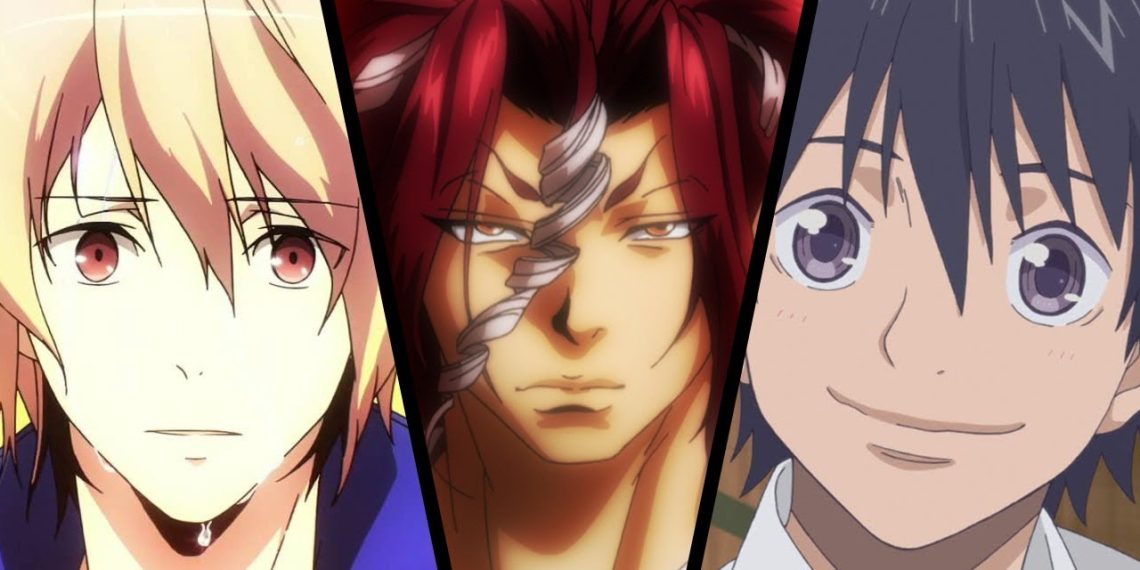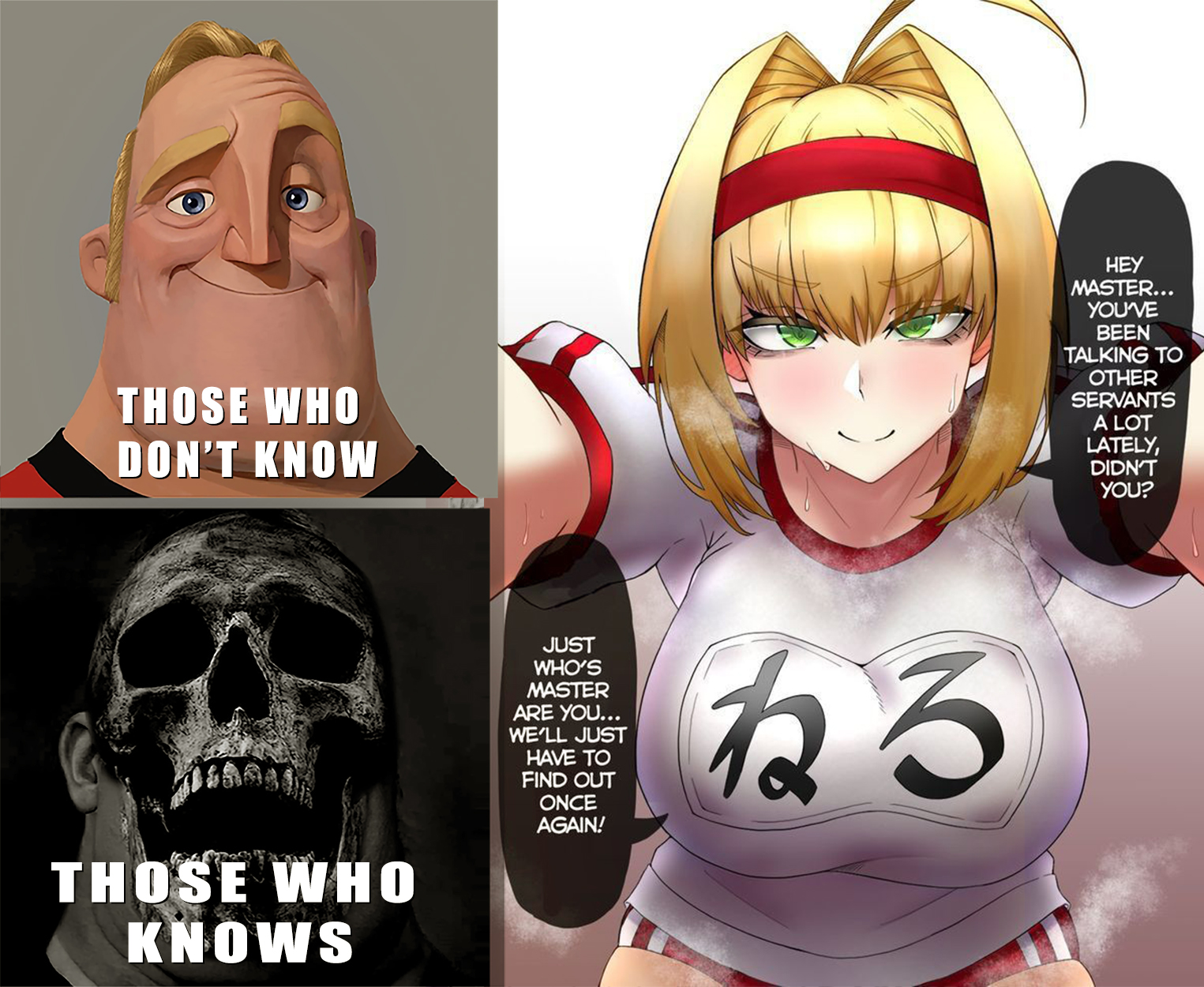Sports is one of the most exciting and unique genres in anime and manga. No matter which sport is at the center of the story, these series are known for their high-intensity, fast-paced action sequences that are perfectly interspersed with emotional and developmental character moments.
Sports anime series have captured the hearts of both Japanese and international youth. Their predominant academic setting makes them incredibly relatable, resonating deeply with young audiences. This relatability has led to sports anime and manga becoming a massive influence on Japanese youth.
By combining the thrill of sports with the universal experiences of growth and perseverance, these series offer more than just entertainment. They inspire, motivate, and reflect the real-life struggles and triumphs of young people, making sports anime a powerful and enduring genre.
7. The Prince of Tennis
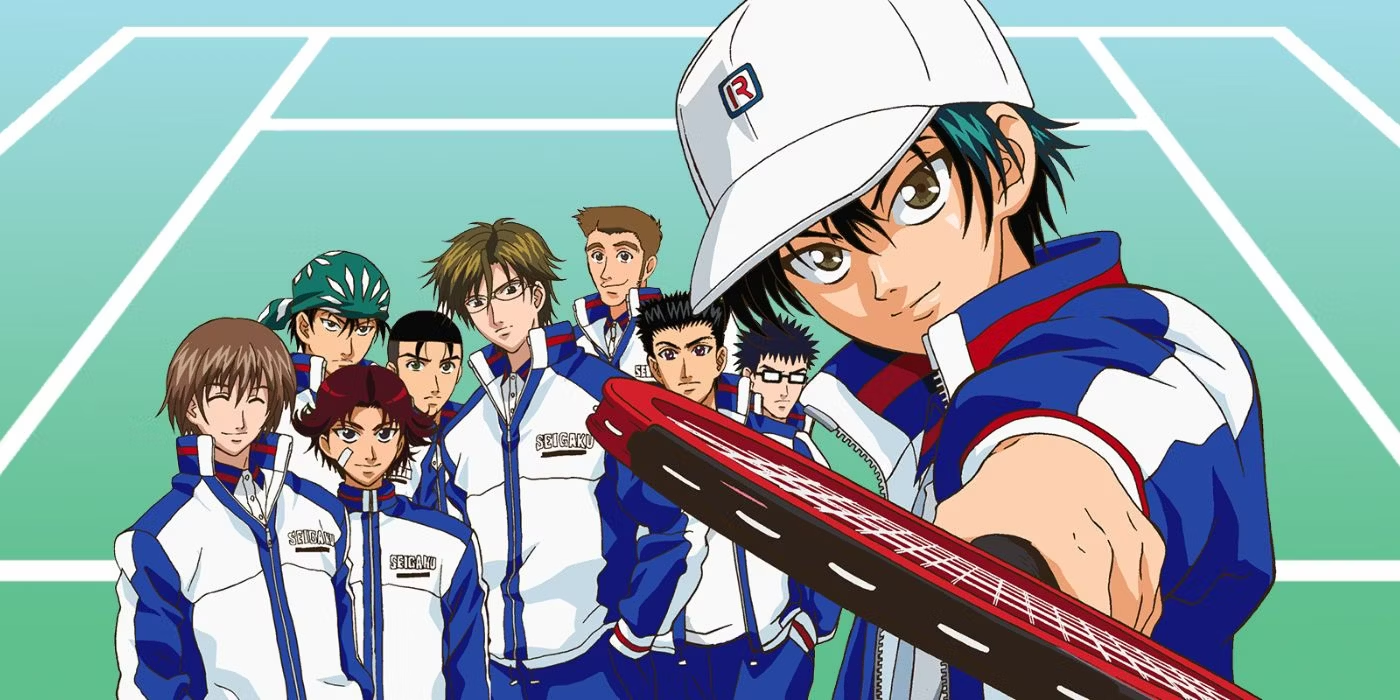
A cult classic, The Prince of Tennis starts out relatively realistic, before gradually evolving into an unapologetically outlandish battle shonen series. Things never get into save the world with the power of tennis territory, but the anime introduces characters with progressively more ridiculous abilities.
This change tends to divide audiences, as the anime’s later arcs are generally less highly rated than its opening season. Still, The Prince of Tennis can be an entertaining ride as long as a viewer is searching for a show that is closer to Kuroko’s Basketball than Slam Dunk.
“The Prince of Tennis” is a Japanese manga series written and illustrated by Takeshi Konomi. The series was serialized in Shueisha’s Weekly Shōnen Jump from 1999 to 2008 and was adapted into an anime series produced by Trans Arts, which aired from October 2001 to March 2005.
The series has also inspired numerous OVAs, musicals, live-action films, and a sequel manga. Known for its blend of intense tennis matches, character-driven storytelling, and a dash of the fantastical, “The Prince of Tennis” stands as a beloved cornerstone in sports anime.
The story follows Ryoma Echizen, a tennis prodigy who returns to Japan after spending years in the United States. Ryoma enrolls at Seishun Academy, commonly referred to as Seigaku, a school known for its strong tennis team. Despite being a first-year student, Ryoma quickly proves his exceptional skills, earning a spot on the school’s prestigious tennis team. His ultimate goal is to surpass his father, Nanjiro Echizen, a legendary tennis player.
As the series progresses, Ryoma and his teammates face various rival schools in regional and national tournaments. Each match showcases not only the players’ physical prowess but also their mental fortitude and strategic thinking. The narrative is driven by intense matches, character development, and dynamics within the Seigaku team, highlighting themes of perseverance, rivalry, and growth.
Ryoma Echizen: Ryoma is the central character of the series, a confident and somewhat aloof tennis genius. His exceptional talent and cool demeanor make him a formidable opponent on the court. Throughout the series, Ryoma’s journey is one of self-discovery as he strives to carve out his own identity separate from his father’s shadow. His growth as a player and a person is central to the narrative, making him a compelling protagonist.
Tezuka Kunimitsu: Tezuka is the captain of the Seigaku tennis team known for his stoic and disciplined nature. He is a role model for his teammates, especially Ryoma. Tezuka’s leadership and his own struggles with injury and expectations provide depth to his character, highlighting the sacrifices and dedication required to excel in sports.
Supporting Characters: “The Prince of Tennis” features a diverse cast of characters, each with their unique playing styles, personalities, and backgrounds. Notable characters include:
Fuji Shusuke: Fuji is known as Seigaku’s “genius,” possessing a calm and collected demeanor. His mastery of “counter” techniques and his enigmatic personality make him one of the most intriguing characters.
Eiji Kikumaru and Shuichiro Oishi: Known as the “Golden Pair,” Eiji and Oishi are Seigaku’s top doubles team. Their strong friendship and seamless coordination on the court are central to many of their victories.
Kaoru Kaido and Takeshi Momoshiro: These two players often have a love-hate relationship, characterized by their constant bickering. Despite this, they form a formidable doubles team, showcasing the theme of overcoming differences for the sake of the team.
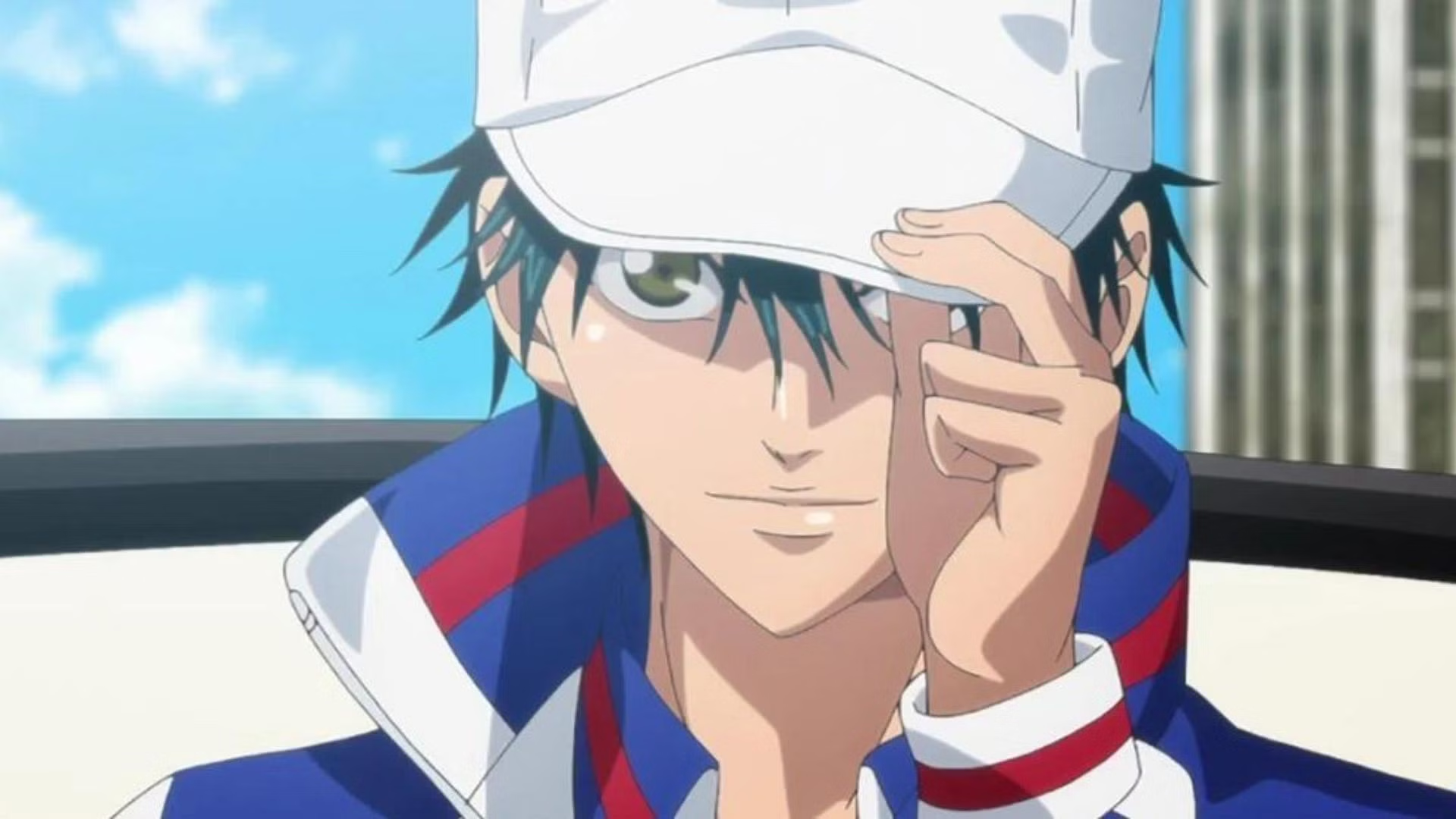
Perseverance is a central theme, as characters constantly push their limits and strive for improvement. Whether it’s overcoming injuries, personal doubts, or fierce competition, the characters’ determination to succeed is a driving force in the series. This theme is particularly evident in the grueling training sessions and the high-stakes matches that test the players’ resolve.
Rivalry is another key theme, with numerous intense and personal rivalries shaping the narrative. From Ryoma’s quest to surpass his father to the rivalries between schools and individual players, these competitive dynamics fuel much of the drama and excitement. Rivalries often lead to mutual respect and growth, underscoring the idea that competition can bring out the best in people.
While tennis is often seen as an individual sport, “The Prince of Tennis” places a significant emphasis on teamwork and camaraderie. The interactions within the Seigaku team, especially during doubles matches, highlight the importance of trust, communication, and cooperation. The series shows that individual talent is crucial, but it is the collective effort and support of the team that lead to true success.
The animation in “The Prince of Tennis” effectively captures the intensity and dynamism of tennis matches. While some of the techniques and abilities showcased are exaggerated for dramatic effect, they add to the excitement and uniqueness of the series. The character designs are distinct and memorable, with each player having a unique look that reflects their personality and playing style.
The tennis matches are choreographed with a mix of realism and fantasy, featuring incredible moves and dramatic visuals that raise the sport to an almost mythical level. This blend of reality and exaggeration makes the series accessible and thrilling for both tennis enthusiasts and general audiences.
“The Prince of Tennis” has had a significant impact on the world of sports anime and manga. Its success led to a resurgence of interest in tennis among young audiences in Japan and beyond. The series’ influence extends beyond the screen, inspiring real-life tennis programs and tournaments aimed at young players.
The anime and manga have received praise for their engaging storytelling, well-developed characters, and thrilling depiction of tennis matches. However, some critics have noted the series’ tendency to exaggerate the sport’s realism, which might not appeal to purists. Despite this, the series’ ability to balance sports action with character-driven drama has garnered a dedicated fanbase.
The popularity of “The Prince of Tennis” led to the creation of several spin-offs and sequels. “New Prince of Tennis,” a continuation of the original series, follows Ryoma and his teammates as they attend a training camp with Japan’s top middle school tennis players. This sequel further explores the characters’ growth and introduces new challenges and rivalries.
Additionally, the franchise includes numerous OVAs, musicals, live-action adaptations, and video games, each expanding on the world of “The Prince of Tennis” and offering fans new ways to engage with the story and characters.
“The Prince of Tennis” is a standout series in the sports anime genre, offering a compelling blend of intense tennis action, character development, and thematic depth. Its exploration of perseverance, rivalry, and teamwork, combined with its dynamic animation and engaging storytelling, makes it a must-watch for sports enthusiasts and anime fans alike. Whether you’re drawn to the thrill of the matches or the personal journeys of the characters, “The Prince of Tennis” serves up an ace in entertainment and inspiration.
6. Birdie Wing: Golf Girls
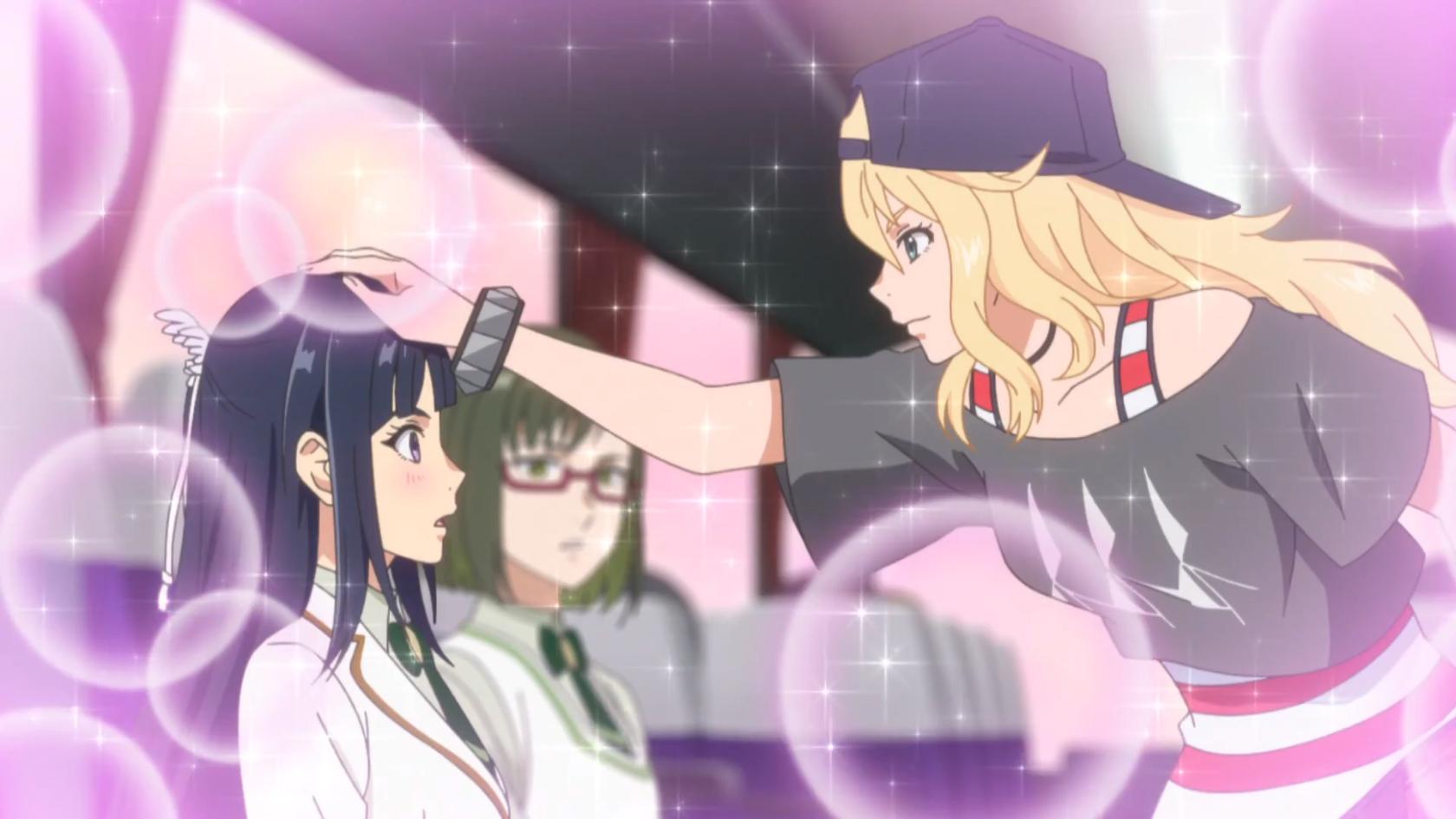
Birdie Wing: Golf Girls’ Story takes arguably the most sophisticated sport and adds the mafia, battle shonen-esque special moves, and an unnamed disease. This is one of those shows that benefits from low expectations, as much of its humor relies on taking viewers by surprise. Consequently, the anime’s impact diminishes if someone goes in expecting an over-the-top action-comedy rather than a conventional sports anime.
That said, even without that element of surprise, Birdie Wing is still an enjoyable watch. The anime manages to essentially parody sports and shonen tropes while still delivering the thrills associated with both genres. The show gradually ramps up the absurdity while also pitting Eve and Aoi against some of the best golfers in the business.
“Birdie Wing: Golf Girls’ Story” is a relatively new addition to the sports anime genre, grabbing audiences with its unique focus on the world of golf. Produced by BN Pictures, the series began airing in April 2022. Unlike many other sports anime that focus on more mainstream sports like soccer or basketball,
“Birdie Wing” goes into the intricacies of golf, combining the serene beauty of the sport with the intense drama of competition. The series follows two young golfers from different backgrounds as they navigate their way through the competitive world of golf, exploring themes of ambition, friendship, and personal growth.
The story of “Birdie Wing: Golf Girls’ Story” centers around two protagonists: Eve and Aoi Amawashi. Eve is a talented but rough-around-the-edges golfer who plays underground golf matches to make a living. Her extraordinary skills and unorthodox methods make her a formidable player, yet she remains somewhat of an enigma in professional golf.
On the other hand, Aoi Amawashi comes from a prestigious golfing family and represents the epitome of elegance and tradition in the sport. Aoi is a prodigy in her own right, with a disciplined approach and a natural talent that makes her a rising star in the golf world.
Their paths cross in an unexpected encounter, leading to a rivalry that pushes both of them to new heights. As they compete against each other and other golfers, they form a complex bond that oscillates between friendship and rivalry. The series explores their individual journeys, the challenges they face, and the growth they experience as golfers and individuals.
Eve: Eve is the heart of “Birdie Wing,” known for her rebellious spirit and raw talent. Her unconventional approach to golf, which includes playing in underground matches and using creative, often risky shots, sets her apart from traditional golfers.
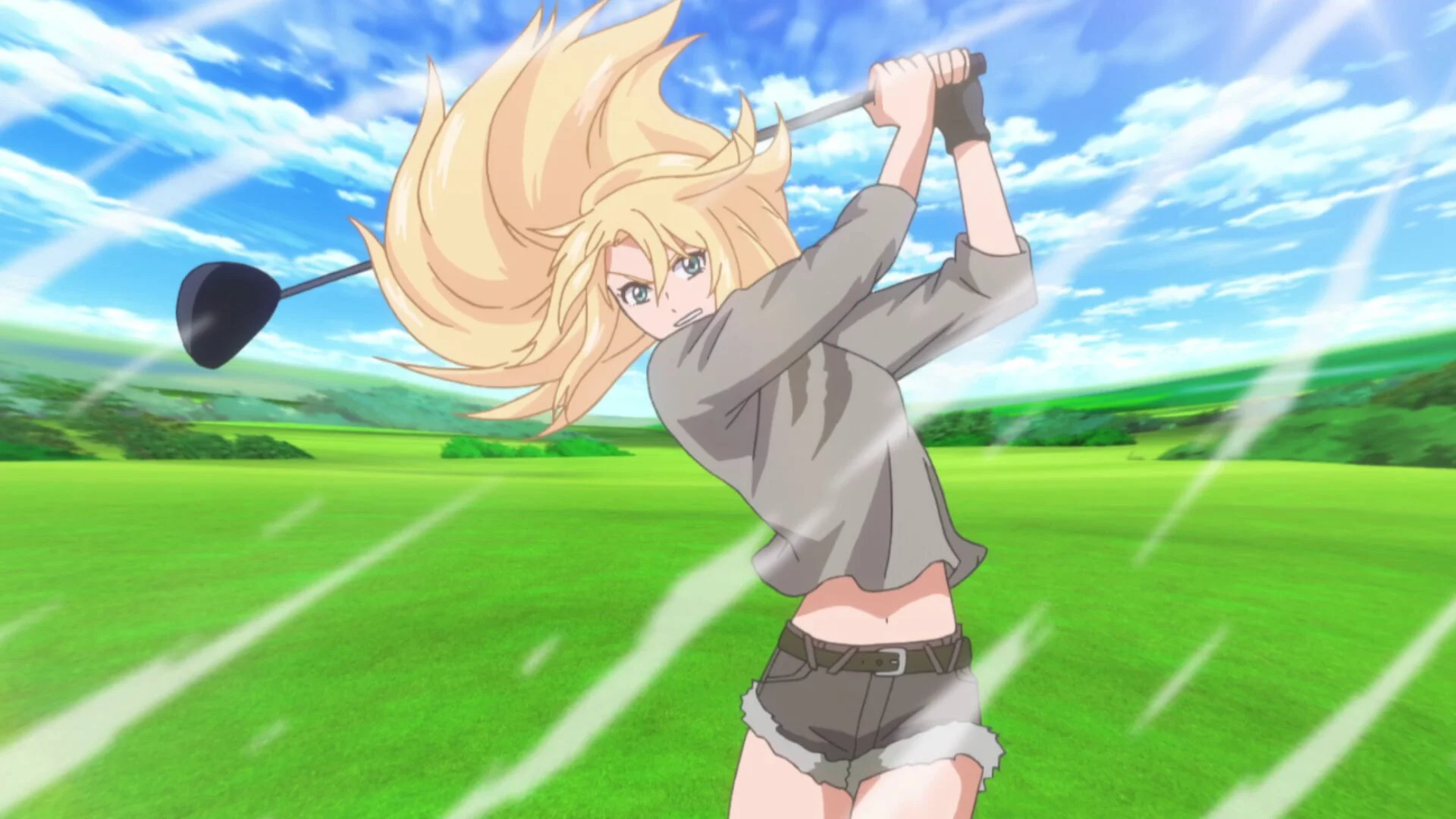
Eve’s journey is one of self-discovery and redemption, as she learns to balance her natural talent with the discipline and etiquette required in professional golf. Her character development is marked by her evolving relationship with Aoi, as well as her interactions with other characters who challenge and support her.
Aoi Amawashi: Aoi is Eve’s foil, representing the disciplined and elegant side of golf. Raised in a family that values tradition and excellence in the sport, Aoi embodies grace and precision on the golf course. Her character arc revolves around her struggle to maintain her composure and meet her family’s high expectations while also developing her own identity as a golfer. Aoi’s interactions with Eve bring out a more adventurous and passionate side of her, showcasing her growth as both a competitor and a person.
Supporting Characters: The series features a diverse cast of supporting characters, each adding depth to the story and enriching the main characters’ journeys. Notable characters include:
Reika: Eve’s mentor and a former professional golfer who guides her through the complexities of the sport and life. Reika’s wisdom and experience provide a grounding influence on Eve, helping her navigate the challenges of professional golf.
Kaede: A fellow competitor and friend who provides a different perspective on the sport. Kaede’s pragmatic approach and her own struggles offer a counterpoint to the protagonists’ journeys, highlighting the diverse paths one can take in golf.
Ambition drives both Eve and Aoi, albeit in different ways. Eve’s ambition is rooted in her desire to prove herself and escape her troubled past, while Aoi’s ambition is fueled by her desire to uphold her family’s legacy and achieve personal excellence. The series explores how ambition can be both a motivating force and a source of conflict, shaping the characters’ actions and decisions.
The rivalry between Eve and Aoi is a central theme, serving as the catalyst for much of the drama and character development in the series. Their competition pushes both of them to their limits, revealing their strengths and weaknesses. The series portrays rivalry not just as a source of conflict, but as a means of growth and mutual respect, highlighting how competitors can inspire each other to reach new heights.
Personal growth is a recurring motif in “Birdie Wing,” as the characters navigate their individual journeys and face various challenges. Eve and Aoi’s development as golfers and individuals is marked by their willingness to learn from each other, embrace new experiences, and overcome their fears and insecurities. The series emphasizes the importance of self-reflection, resilience, and the courage to pursue one’s dreams.
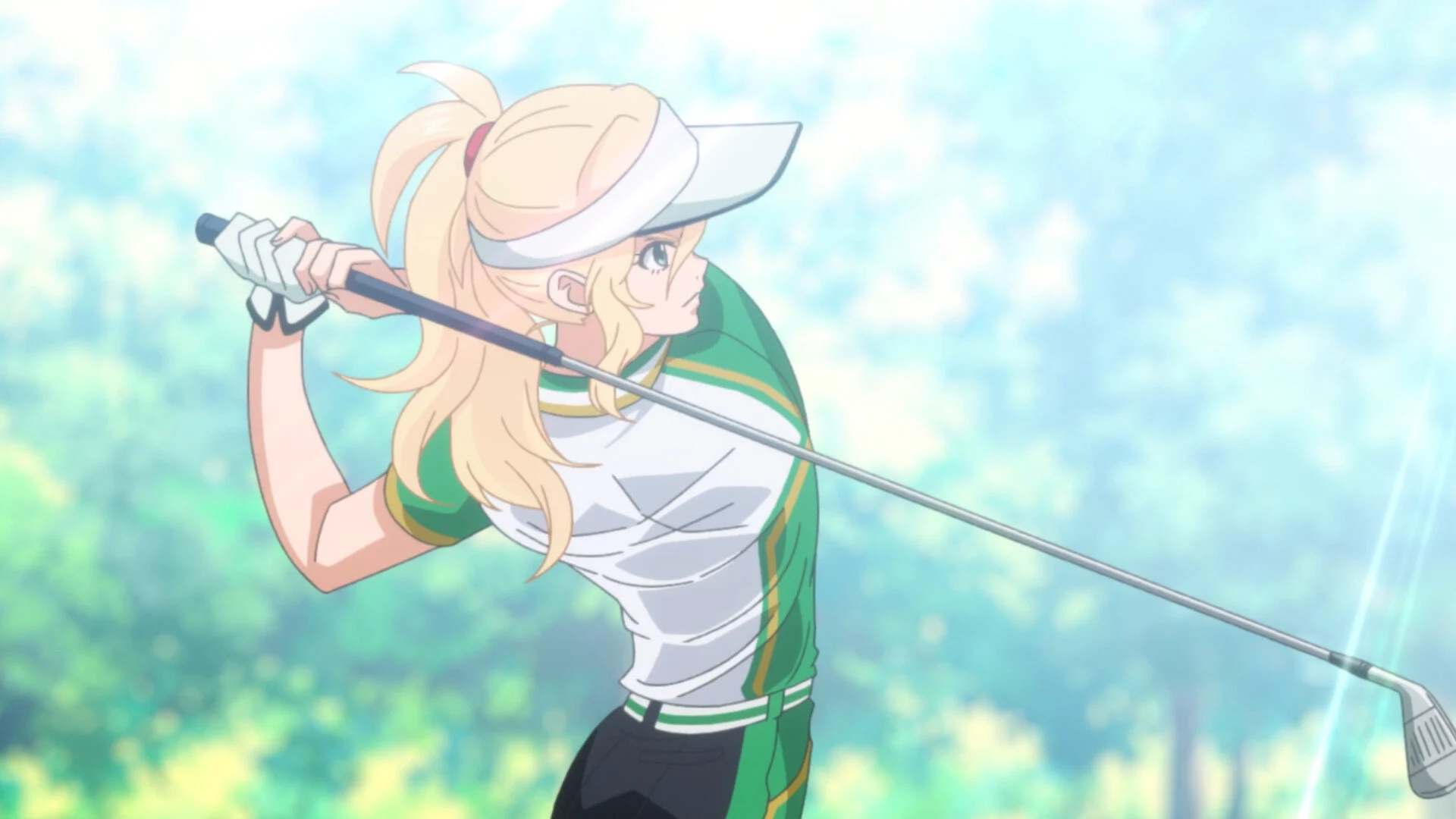
The animation in “Birdie Wing: Golf Girls’ Story” is visually appealing, capturing the serene beauty of golf courses and the intensity of competitive matches. The character designs are distinctive and expressive, reflecting the personalities and backgrounds of the characters. The golf sequences are well-animated, showcasing the fluidity and precision of the sport while also incorporating dynamic angles and creative shots to enhance the excitement of the matches.
The art style balances realism with a touch of the fantastical, making the golf scenes both visually stunning and emotionally engaging. The series uses vibrant colors and detailed backgrounds to create a rich and immersive world, drawing viewers into the serene yet competitive atmosphere of the sport.
“Birdie Wing: Golf Girls’ Story” has been well-received by audiences and critics alike for its fresh take on the sports anime genre. The series has been praised for its compelling characters, engaging storyline, and beautiful animation. Its focus on golf, a sport less commonly featured in anime, sets it apart from other sports series, attracting both golf enthusiasts and general anime fans.
The portrayal of female athletes in a competitive and traditionally male-dominated sport has also been lauded, highlighting themes of empowerment and breaking stereotypes. The series’ ability to blend the elegance and serenity of golf with the intensity and drama of competition has resonated with viewers, making it a standout in the genre.
“Birdie Wing: Golf Girls’ Story” offers a refreshing and nice addition to the sports anime genre, with its unique focus on golf, well-developed characters, and engaging themes. The series skillfully combines the beauty and precision of golf with the drama and excitement of competition, creating a rich and immersive viewing experience.
Whether you’re a fan of sports anime or simply looking for a compelling story with strong character development and beautiful animation, “Birdie Wing: Golf Girls’ Story” is a must-watch that delivers both heart and excitement on the green.
5. Eyeshield 21

There aren’t many football anime out there, particularly of the American variety, but Eyeshield 21 should satisfy fans of the sport. While the anime is considered a serviceable adaptation of Riichiro Inagaki and Yusuke Murata’s acclaimed manga, it still holds its own with a solid lineup of characters, decent action sequences, and a consistent sense of humor.
With a total of 145 episodes, Eyeshield 21 does tend to become somewhat repetitive in its latter half, especially for those who aren’t fond of typical Shonen story tropes. However, the presence of characters like Youichi Hiruma, one of the most entertaining figures in any sports anime, along with a strong supporting cast, keeps the series engaging. Despite its occasional tendency to prolong matches, the anime delivers consistently exciting contests, producing plenty of thrilling moments throughout.
“Eyeshield 21” is a Japanese sports manga series written by Riichiro Inagaki and illustrated by Yusuke Murata. Serialized in Shueisha’s Weekly Shōnen Jump from 2002 to 2009, the series was adapted into an anime by Studio Gallop, airing from April 2005 to March 2008.
“Eyeshield 21” focuses on American football, a sport relatively niche in Japan, and follows the journey of a timid high school student who transforms into a football prodigy. Known for its high-energy matches, unique characters, and inspirational themes, “Eyeshield 21” stands out as a remarkable entry in the sports anime genre.
The story centers around Sena Kobayakawa, a shy and physically weak high school student who has been bullied throughout his life. However, Sena possesses incredible speed and agility due to years of running errands for bullies. These abilities catch the attention of Yoichi Hiruma, the devilish quarterback of the Deimon Devil Bats football team. Hiruma recruits Sena as the team’s running back, giving him the pseudonym “Eyeshield 21” to conceal his identity and prevent other teams from poaching him.
Initially hesitant, Sena quickly embraces his new role, finding camaraderie and purpose within the team. The series follows the Deimon Devil Bats as they aim for the Christmas Bowl, the national high school football championship. Along the way, they face formidable opponents, each with their own unique skills and strategies, forcing Sena and his teammates to grow and evolve both as players and individuals.
Sena Kobayakawa (Eyeshield 21): Sena is the heart of the series, starting as a timid boy and evolving into a confident and courageous athlete. His journey from a bullied student to a football hero is marked by personal growth, perseverance, and a deepening understanding of teamwork and friendship. Sena’s development is not only about his physical abilities but also about his self-belief and determination.
Yoichi Hiruma: Hiruma is the mastermind behind the Deimon Devil Bats, known for his ruthless tactics, strategic genius, and demonic personality. Despite his intimidating demeanor, Hiruma is deeply committed to the team’s success and serves as a mentor to Sena. His complex character adds depth to the series, revealing layers of loyalty, ambition, and cunning.
Supporting Characters: The series boasts a diverse cast of supporting characters, each contributing to the team’s dynamic and the narrative:
Riku Kaitani: A former track star and Sena’s childhood friend, Riku joins the Deimon Devil Bats as a wide receiver. His relationship with Sena provides emotional depth and highlights themes of friendship and rivalry.

Monta (Taro Raimon): Monta is a passionate baseball player who transitions to football, becoming a star receiver for the Devil Bats. His enthusiasm and determination add energy and humor to the series.
Kurita Ryoukan: The gentle giant of the team, Kurita is the team’s lineman and Hiruma’s best friend. His strength and kindness balance Hiruma’s harshness, creating a compelling dynamic.
Perseverance is a central theme, with characters constantly pushing their limits and striving for improvement. The series highlights the importance of hard work, dedication, and resilience in achieving success, both on and off the field. Sena’s transformation from a timid boy to a football hero exemplifies the power of perseverance.
Teamwork is another key theme, as the Deimon Devil Bats must learn to work together to overcome their challenges. The series emphasizes the importance of trust, communication, and unity, showcasing how individual talents contribute to collective success. The bonds formed between teammates are central to the story, highlighting the value of collaboration and mutual support.
The theme of identity is explored through Sena’s journey as Eyeshield 21. His dual identity as a regular student and a football star raises questions about self-perception, confidence, and the impact of societal expectations. Sena’s evolution reflects the process of finding and embracing one’s true self.
The animation in “Eyeshield 21” is vibrant and dynamic, capturing the intensity and excitement of football matches. The character designs are distinctive, with each player sporting unique and memorable looks that reflect their personalities and playing styles. Yusuke Murata’s detailed and expressive art style brings the action to life, making the football sequences thrilling and engaging.
The series uses a mix of realistic and exaggerated visuals to enhance the impact of key moments. Special techniques and moves are often depicted with dramatic flair, adding a fantastical element to the sport and heightening the sense of excitement. This blend of realism and exaggeration makes the matches both believable and highly entertaining.
“Eyeshield 21” has had a significant impact on the sports anime genre, popularizing American football in Japan and inspiring a new generation of fans. The series’ ability to make the complex rules and strategies of football accessible and exciting to a broad audience is one of its key strengths.
The anime and manga have received praise for their engaging storytelling, well-developed characters, and high-energy action. Critics and fans alike have lauded the series for its ability to balance humor, drama, and sports action, creating a compelling and entertaining narrative. The series’ success has led to various adaptations, including video games and a live-action film, further cementing its legacy.
“Eyeshield 21” stands out as a dynamic and inspirational sports anime that combines intense football action with heartfelt character development and meaningful themes. The series skillfully portrays the challenges and triumphs of its characters, highlighting the importance of perseverance, teamwork, and self-discovery.
With its engaging storyline, memorable characters, and vibrant animation, “Eyeshield 21” is a must-watch for sports enthusiasts and anime fans alike. Whether you’re drawn to the thrill of the game or the emotional journeys of the characters, “Eyeshield 21” delivers an electrifying and unforgettable experience.
4. SK8 The Infinity
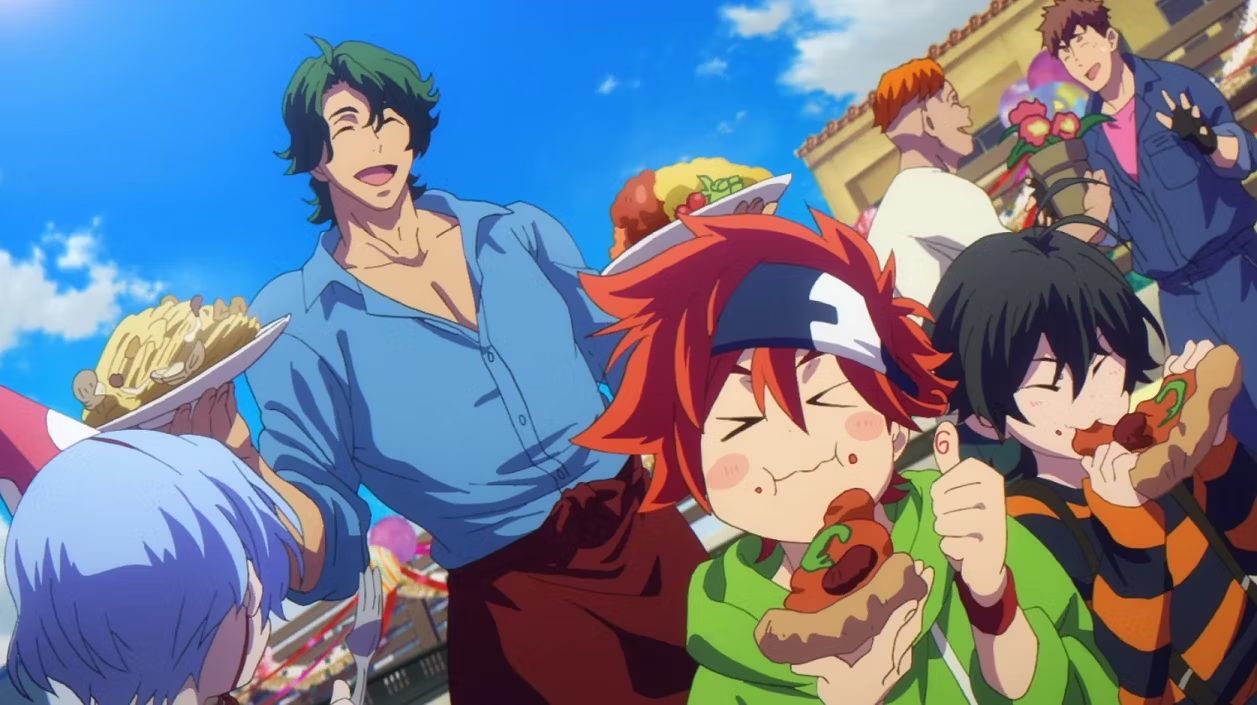
One of the standout sports series of the 2020s, SK8 The Infinity is helmed by Hiroko Utsumi, renowned for her work on several other critically acclaimed sports anime. This show pushes skateboarding to its limits with adrenaline-pumping illegal races known as S, often resulting in high-stakes and serious injuries.
The blossoming friendship between Reki and Langa is a heartwarming focal point, portrayed with sincerity and depth. Moreover, the action sequences spare no expense, delivering jaw-dropping visuals that leave a lasting impression. Despite being a newcomer compared to genre classics, SK8 the Infinity promises enduring appeal. Its spotlight on extreme sports, a rarity in anime, adds a refreshing twist to the sports genre.
“SK8 The Infinity” is an original Japanese anime television series produced by studio Bones and directed by Hiroko Utsumi. Premiering from January to April 2021, the series quickly grabbed audiences with its vibrant animation, compelling characters, and thrilling portrayal of skateboarding.
Unlike many sports anime that focus on more traditional sports, “SK8 The Infinity” dives into the underground, high-stakes world of extreme skateboarding. This blend of high-energy action and heartfelt storytelling creates a dynamic narrative that resonates with viewers of all ages.
The story centers around Reki Kyan, a high school student with a deep passion for skateboarding. Reki is an enthusiastic skateboarder who becomes involved in “S,” a secret and dangerous underground skateboarding race that takes place at night. During these races, skaters from all walks of life compete in intense, high-speed battles filled with treacherous obstacles.
Reki’s life takes an exciting turn when he meets Langa Hasegawa, a transfer student from Canada with no skateboarding experience. Despite his inexperience, Langa, who is a former snowboarder, quickly adapts to skateboarding due to his balance and board skills. Together, Reki and Langa dive deeper into the world of “S,” forming a close bond as they face increasingly challenging opponents and uncover the darker aspects of the skateboarding community.
Reki Kyan: Reki is the heart and soul of the series, characterized by his infectious enthusiasm and deep love for skateboarding. His journey is one of growth and self-discovery, as he navigates his insecurities and the pressures of competing in “S.” Reki’s passion often motivates those around him, and his character arc highlights the importance of perseverance and staying true to oneself.
Langa Hasegawa: Langa, on the other hand, starts as a complete novice in skateboarding but quickly proves to be a natural talent due to his background in snowboarding. Langa’s character is defined by his calm demeanor and his struggle to adapt to life in Japan after the loss of his father. His growing friendship with Reki helps him find joy and purpose again, illustrating the power of camaraderie and shared passion.
Supporting Characters: The series features a diverse cast of supporting characters, each adding depth to the narrative and highlighting different aspects of the skateboarding world:
Miya Chinen: A young skateboarding prodigy with a competitive streak. Miya initially appears arrogant but reveals a more vulnerable side as he seeks genuine friendship and acceptance.
Joe (Kojiro Nanjo): A charismatic and physically imposing skater who runs an Italian restaurant. Joe’s style is based on strength and power, and he acts as a mentor figure to Reki and Langa.
Cherry Blossom (Kaoru Sakurayashiki): A tech-savvy and graceful skater who designs his own advanced skateboards. Cherry’s analytical approach contrasts with Joe’s raw power, and his deep bond with Joe adds a layer of complexity to the series.
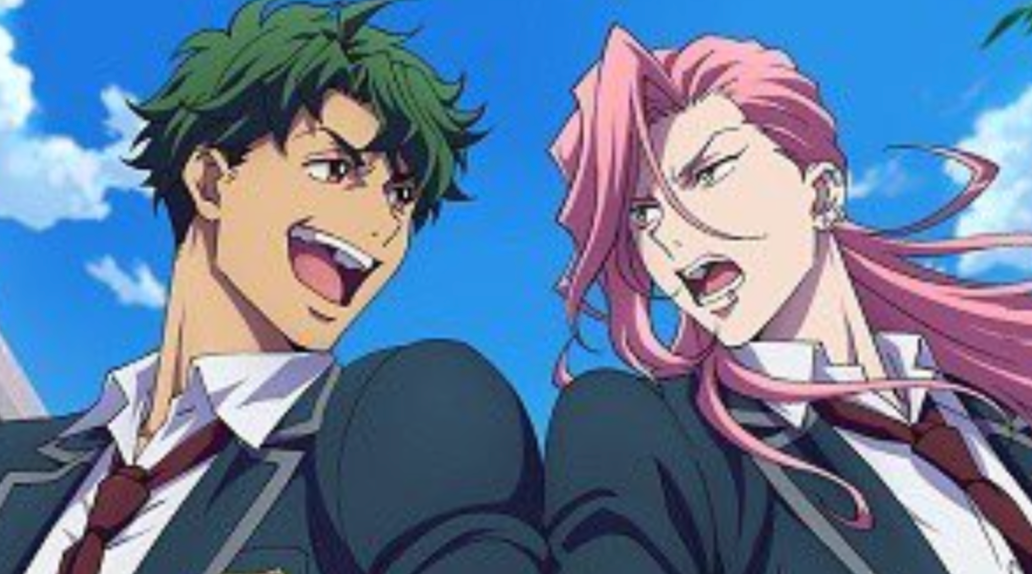
Adam (Ainosuke Shindo): The main antagonist, Adam is a flamboyant and dangerous skater with a dark past. His obsession with the thrill of skateboarding drives much of the conflict in the series, making him a formidable and tragic villain.
At its core, “SK8 The Infinity” is a story about friendship. The bond between Reki and Langa is central to the narrative, showcasing how their mutual support and shared love for skateboarding help them overcome personal and external challenges. Their friendship is depicted with warmth and authenticity, resonating deeply with viewers.
The series also explores themes of identity and self-acceptance. Characters like Reki and Langa struggle with their sense of self-worth and belonging, both within the skateboarding world and in their personal lives. Through their journey, they learn to embrace their unique strengths and find confidence in who they are.
“SK8 The Infinity” is a celebration of passion and the joy of pursuing what you love. The characters’ dedication to skateboarding, despite the risks and challenges, highlights the fulfillment that comes from following one’s passion. The series portrays skateboarding not just as a sport, but as a form of self-expression and a way to connect with others.
Studio Bones’ production quality shines through in “SK8 The Infinity,” with vibrant and fluid animation that brings the skateboarding sequences to life. The races are thrilling and visually stunning, with dynamic camera angles and meticulous attention to detail capturing the speed and intensity of the sport. The character designs are distinctive and expressive, reflecting each skater’s personality and style.
The series also excels in its use of color and lighting to set the tone and mood for different scenes, from the bright and energetic daytime moments to the tense and shadowy night races. The combination of high-energy action and emotional depth is masterfully conveyed through the animation, making “SK8 The Infinity” a visual treat.
The soundtrack of “SK8 The Infinity” complements its vibrant animation, featuring a mix of upbeat and intense tracks that enhance the excitement of the skateboarding scenes. The opening theme, “Paradise” by Rude-α, and the ending theme, “Infinity” by Yuuri, are particularly memorable, capturing the series’ adventurous spirit and emotional core.
The voice acting is another highlight, with a talented cast bringing the characters to life. Tasuku Hatanaka (Reki) and Chiaki Kobayashi (Langa) deliver standout performances, capturing the nuances of their characters’ personalities and growth. The voice actors’ chemistry further enhances the authenticity of the friendships and rivalries depicted in the series.
“SK8 The Infinity” has made a significant impact on both fans of sports anime and the broader anime community. Its fresh take on the sports genre, combined with its high-quality animation and compelling storytelling, has garnered widespread acclaim. The series has also inspired a renewed interest in skateboarding, with fans appreciating the sport’s portrayal and the positive messages about friendship and passion.
Critics have praised “SK8 The Infinity” for its character development, exciting action sequences, and the balance between lighthearted moments and deeper emotional themes. The series has been commended for its inclusive and diverse cast, appealing to a wide range of viewers.
“SK8 The Infinity” stands out as a dynamic and heartfelt addition to the sports anime genre. Its exhilarating portrayal of skateboarding, combined with its focus on friendship, identity, and passion, creates a compelling narrative that resonates with viewers.
With its vibrant animation, memorable characters, and uplifting themes, “SK8 The Infinity” offers an unforgettable ride that captures the joy and thrill of chasing your dreams and forging meaningful connections along the way. Whether you’re a fan of sports anime or looking for a series with emotional depth and high-energy action, “SK8 The Infinity” is a must-watch that delivers on all fronts.
3. Ace Of Diamond
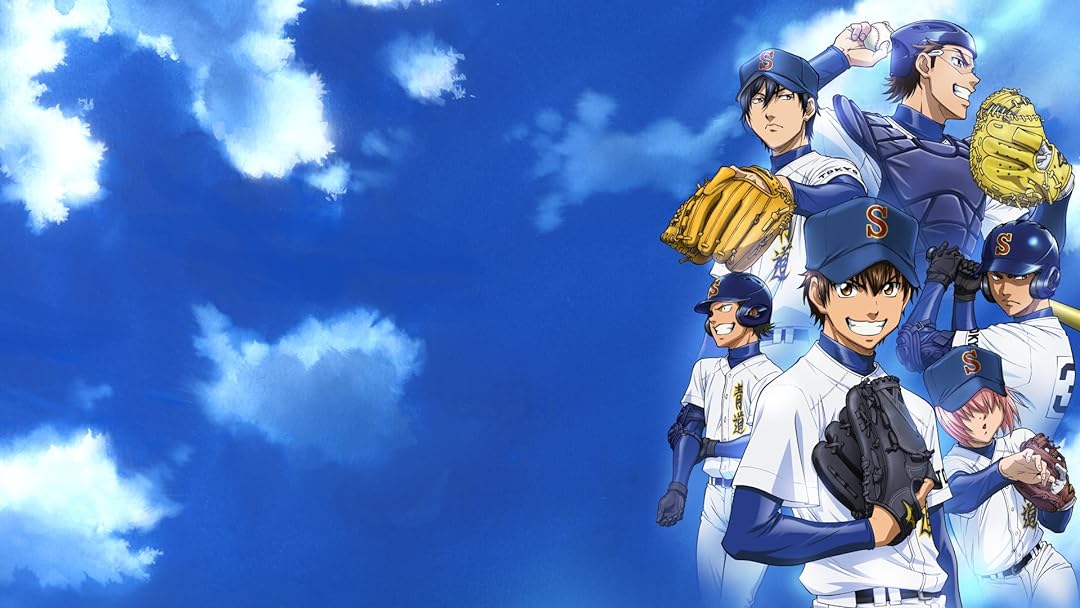
With well over 100 episodes to explore, Ace of Diamond offers a rich reservoir of content. The baseball anime centers on the intense rivalry between Seidou High’s two main pitchers: the fiery Eijun Sawamura and the quietly formidable Satoru Furuya. Despite their divergent playing styles, both aspire to claim the coveted position of Seidou’s ace.
Spanning multiple generations of teams, Ace of Diamond delivers an epic narrative filled with fascinating highs and heart-wrenching lows. While Sawamura occasionally takes a backseat, allowing other characters to shine, the ensemble cast remains robust and compelling throughout the series.
“Ace of Diamond” (ダイヤのA, Daiya no A) is a Japanese baseball-themed manga written and illustrated by Yuji Terajima. Serialized in Kodansha’s Weekly Shōnen Magazine from 2006 to 2015, with a second part, “Ace of Diamond Act II,” continuing from 2015 onward, the series was adapted into an anime by Madhouse and Production I.G.
The anime premiered in October 2013 and has since been lauded for its detailed depiction of baseball, rich character development, and intense emotional arcs. “Ace of Diamond” goes deep into the world of high school baseball, capturing the highs and lows of aspiring athletes striving to reach the pinnacle of their sport.
The story follows Eijun Sawamura, a passionate and fiery left-handed pitcher from a small rural junior high school. His life takes a dramatic turn when he is scouted by a prestigious Tokyo high school, Seidou High, renowned for its baseball program. Determined to prove his worth and fulfill his dream of becoming the ace pitcher, Sawamura faces numerous challenges, from fierce competition within the team to high-stakes matches against formidable opponents.
Sawamura’s journey is marked by his relentless drive to improve, his struggles with self-doubt, and his unwavering commitment to his teammates. Alongside him are fellow pitchers Satoru Furuya, who possesses a powerful fastball, and Kazuya Miyuki, a highly skilled catcher whose tactical mind and leadership are instrumental to the team’s success. Together, they navigate the competitive world of high school baseball, aiming for the ultimate goal: winning the national championship at Koshien Stadium.
Sawamura is the heart of “Ace of Diamond,” characterized by his boundless energy, determination, and sometimes reckless enthusiasm. His journey from an undisciplined pitcher with raw talent to a more refined and strategic player is central to the series. Sawamura’s growth is fueled by his encounters with rivals, his dedication to mastering new pitches, and his evolving understanding of teamwork.
Furuya serves as both a teammate and a rival to Sawamura. His natural talent and powerful fastball make him a formidable presence on the mound. However, Furuya’s character arc explores his struggles with consistency, pressure, and the mental aspects of pitching. His development highlights the importance of mental fortitude and adaptability in sports.
Miyuki, the team’s catcher and captain, is known for his sharp intellect, strategic thinking, and sometimes mischievous personality. His ability to read opponents and guide pitchers makes him an invaluable asset to Seidou High. Miyuki’s leadership and mentorship play a crucial role in Sawamura’s growth, showcasing the importance of guidance and teamwork in achieving success.
The series features a rich cast of supporting characters, each with their own unique backgrounds, personalities, and contributions to the team. Key players include:
Haruichi Kominato: A talented second baseman with a calm demeanor and exceptional fielding skills. His quiet strength and reliability make him a key player for Seidou.
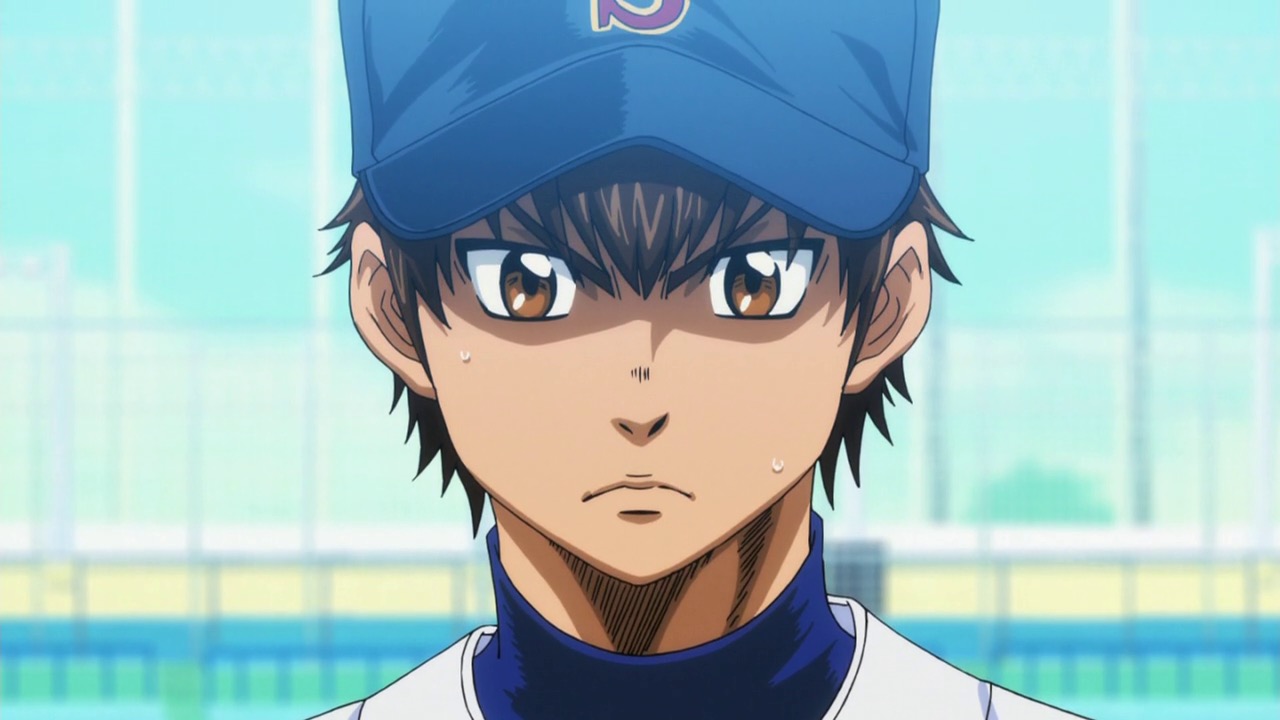
Yuki Tetsuya: The team’s stoic and dependable third-year captain, whose leadership and batting prowess inspire his teammates. Chris Yū Takigawa: A senior catcher whose wisdom and experience provide invaluable support to Sawamura and the rest of the team.
he series emphasizes the importance of perseverance and hard work in achieving one’s goals. Sawamura’s relentless drive to improve and overcome his weaknesses exemplifies this theme, inspiring viewers to pursue their passions despite obstacles and setbacks.
Teamwork is a central theme, highlighting how individual talents must be harmonized to achieve collective success. The dynamics between pitchers and catchers, the coordination between fielders, and the unity of the team as a whole are crucial to Seidou’s victories. The series showcases how trust, communication, and mutual support are essential in any team sport.
Personal growth is a recurring motif, with characters evolving both as athletes and individuals. Sawamura’s development from a hot-headed rookie to a more strategic and composed pitcher mirrors the growth of his teammates. The series explores the emotional and psychological aspects of sports, illustrating how personal experiences and relationships shape the characters’ journeys.
The animation quality in “Ace of Diamonds” is impressive, particularly in its depiction of baseball games. The series captures the intensity and excitement of the sport through fluid motion, dynamic camera angles, and detailed portrayals of pitching, batting, and fielding. The character designs are distinctive, with each player’s personality reflected in their appearance and expressions.
Studio Madhouse and Production I.G. excel in bringing the baseball action to life, making each game thrilling and engaging. The use of slow-motion, close-ups, and strategic pauses enhances the dramatic moments, drawing viewers into the high-stakes world of high school baseball.
The soundtrack of “Ace of Diamond” complements its high-energy animation, featuring a mix of uplifting and intense tracks that enhance the emotional impact of key scenes. The opening and ending themes are particularly memorable, capturing the spirit of competition and the emotional journeys of the characters.
The voice acting is another highlight, with a talented cast bringing depth and authenticity to their roles. Ryota Ohsaka (Sawamura), Nobunaga Shimazaki (Furuya), and Takahiro Sakurai (Miyuki) deliver standout performances, capturing the nuances of their characters’ personalities and growth. The chemistry between the voice actors further enhances the authenticity of the relationships and rivalries depicted in the series.
“Ace of Diamond” has had a significant impact on the sports anime genre, garnering a dedicated fanbase and critical acclaim. Its realistic portrayal of baseball, combined with compelling character arcs and emotional depth, has set a high standard for sports anime. The series has also contributed to a renewed interest in baseball, particularly among younger audiences.
Critics and fans have praised “Ace of Diamond” for its engaging storytelling, well-developed characters, and thrilling sports action. The series’ ability to balance humor, drama, and intense competition has made it a standout in the genre. Its success has led to multiple seasons, OVAs, and even a stage play adaptation, further cementing its legacy.
“Ace of Diamond” stands out as a dynamic and inspirational sports anime that combines intense baseball action with rich character development and meaningful themes. The series skillfully portrays the challenges and triumphs of its characters, highlighting the importance of perseverance, teamwork, and personal growth.
With its engaging storyline, memorable characters, and vibrant animation, “Ace of Diamond” is a must-watch for sports enthusiasts and anime fans alike. Whether you’re drawn to the thrill of the game or the emotional journeys of the characters, “Ace of Diamond” delivers an unforgettable experience that captures the heart and spirit of baseball.
2. Megalo Box
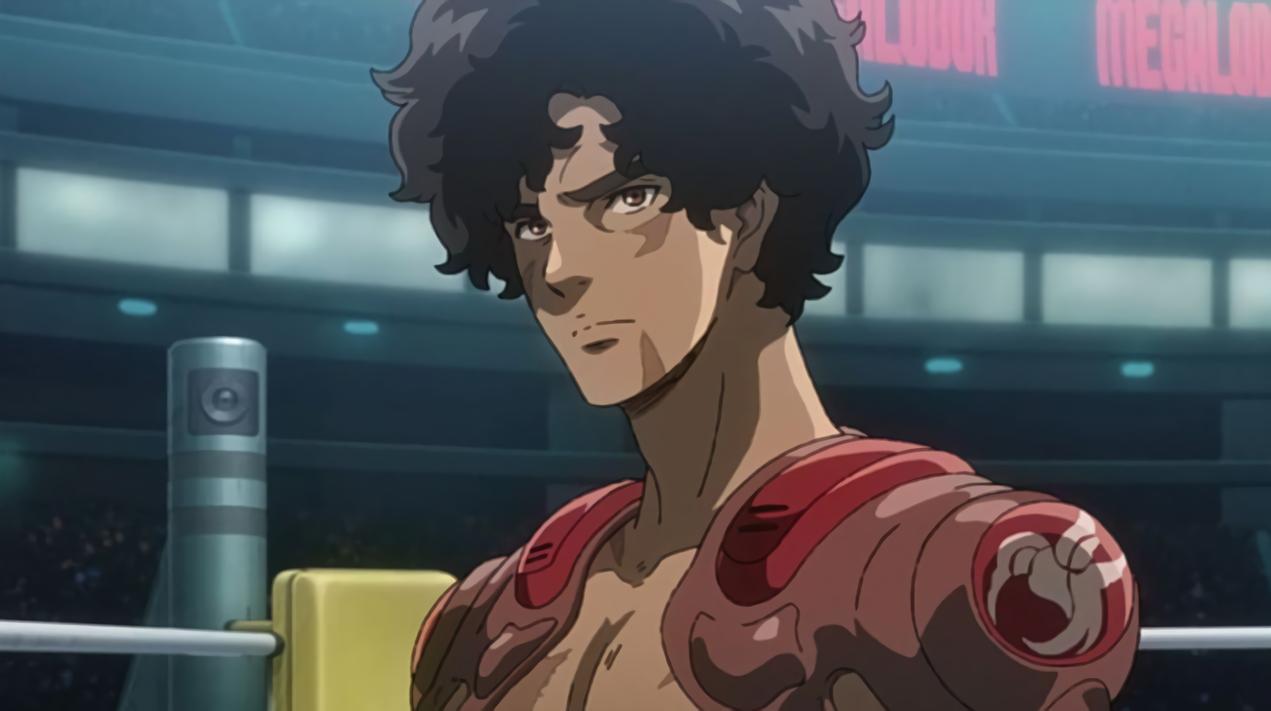
Megalo Box, created to commemorate Tomorrow’s Joe’s 50th anniversary, infuses boxing with a sci-fi twist. Joe, accustomed to battling in underground matches as a junkyard dog, sets his sights on the grand competition known as Megalonia, aiming to confront its champion, Yuri.
While rooted in the sport of boxing, Megalo Box introduces a futuristic element with fighters equipped with mechanical arms and gears, providing a substantial advantage in combat. Facing the challenge of lacking access to proper Gear, Joe opts for a traditional approach to fighting. The series boasts timeless hand-drawn animation, a compelling and multifaceted protagonist, and impeccably choreographed and dynamic fight sequences. Season 2 takes the narrative in an unexpected direction with remarkable execution, arguably surpassing its predecessor.
“Megalo Box” is a modern-day classic in the sports anime genre, combining the grit of boxing with the excitement of futuristic technology. Produced to commemorate the 50th anniversary of the manga series “Ashita no Joe,” “Megalo Box” pays homage to its predecessor while offering a fresh and dynamic take on the sport. With its unique art style, compelling characters, and adrenaline-pumping action, “Megalo Box” has captured the hearts of audiences worldwide since its release in 2018.
Set in a dystopian future where Megalo Boxing—a form of boxing where fighters wear exoskeletons called Gear to enhance their abilities—is the most popular sport, “Megalo Box” follows the journey of Junk Dog, a talented but downtrodden underground fighter. Dissatisfied with his life and seeking true freedom, Junk Dog dreams of fighting in the prestigious Megalonia tournament, which features the best Megalo Boxers from around the world.
In a twist of fate, Junk Dog encounters Gansaku Nanbu, a former boxer turned coach, who sees potential in him. Together, they adopt the persona of Joe and enter the Megalonia tournament as an underdog team. Along the way, they face formidable opponents, navigate political intrigue, and confront their own inner demons. As Joe fights his way to the top, he discovers the true meaning of strength, identity, and purpose.
Joe (Junk Dog): Joe is the embodiment of resilience and determination, driven by a desire to break free from the constraints of his past and forge his own destiny. His journey from a disillusioned underground fighter to a symbol of hope and inspiration is at the heart of the series. Joe’s growth as a fighter and as a person is marked by his unwavering resolve, his willingness to confront his fears, and his deepening bonds with those around him.
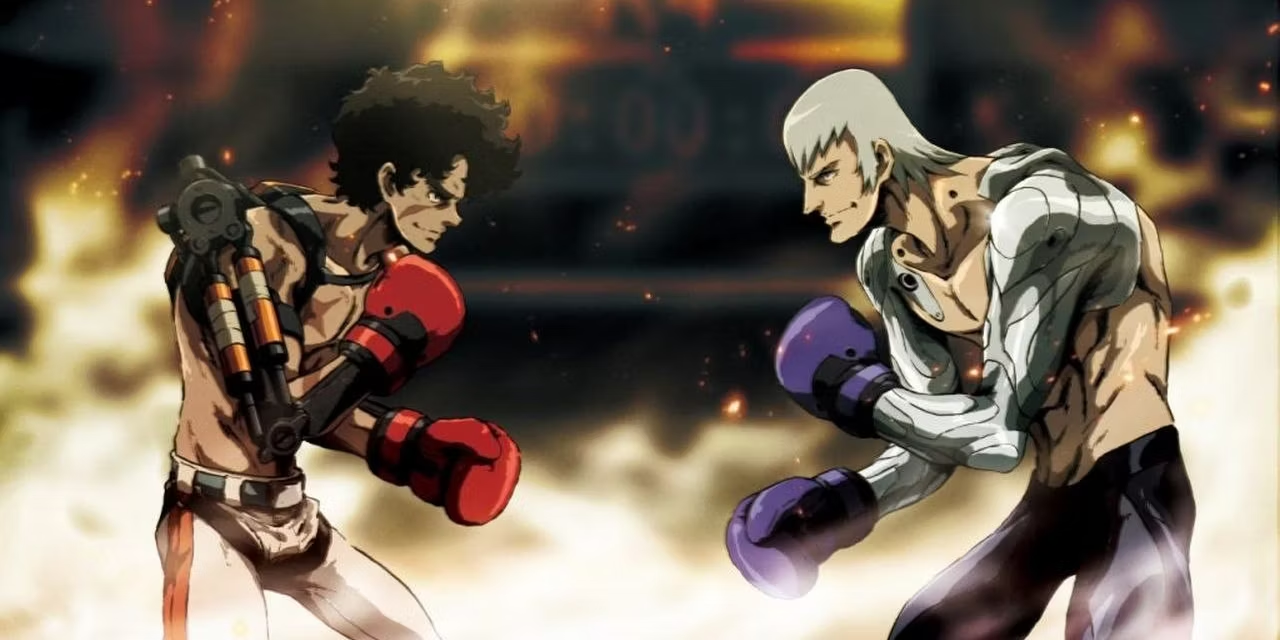
Gansaku Nanbu: Nanbu serves as Joe’s coach and mentor, guiding him through the ups and downs of the Megalonia tournament. Despite his shady past and questionable methods, Nanbu genuinely cares for Joe and believes in his potential. Throughout the series, Nanbu grapples with guilt and redemption, ultimately finding solace in Joe’s journey and the opportunity for a fresh start.
Sachio: Sachio is a young orphan who becomes Joe’s loyal friend and supporter. Resourceful and street-smart, Sachio adds a touch of levity to the series with his witty remarks and unwavering optimism. His bond with Joe and Nanbu serves as a reminder of the importance of friendship and family in times of adversity.
Megalo Box explores the theme of identity through Joe’s quest to define himself beyond the confines of his past and his circumstances. His journey parallels the struggles of marginalized individuals striving to carve out their place in society and assert their worth. Through Megalo Boxing, Joe finds a means of self-expression and a path to self-discovery, reclaiming his identity and asserting his agency in a world that seeks to define him.
Redemption is a recurring motif in the series, with characters grappling with their past mistakes and striving to atone for their sins. Nanbu’s journey from a fallen boxer to a respected coach reflects this theme, as he seeks to make amends for his past failures and find redemption through Joe’s success. The series underscores the transformative power of forgiveness, resilience, and second chances.
“Megalo Box” pays homage to its predecessor, “Ashita no Joe,” by exploring themes of legacy and tradition. Through Joe’s journey, the series celebrates the enduring spirit of boxing and its ability to inspire future generations. Joe’s quest for greatness echoes the legacy of past champions while forging a new path forward, symbolizing the timeless appeal of the sport and its ability to transcend time and space.
The animation style of “Megalo Box” is distinctive, blending retro aesthetics with modern techniques to create a visually striking and immersive world. The character designs are gritty and realistic, reflecting the harsh and gritty nature of the dystopian setting. The use of bold colors, dynamic camera angles, and fluid motion adds to the intensity and excitement of the boxing matches, drawing viewers into the heart-pounding action.
The series’ art direction is complemented by its evocative soundtrack, featuring a mix of hip-hop, electronic, and rock music that captures the energy and atmosphere of the urban surface. The opening theme, “BITE,” by Leo Imai, sets the tone for each episode, while the score by Mabanua enhances the emotional depth and intensity of key moments.
“Megalo Box” has received widespread acclaim from both critics and audiences for its innovative storytelling, nice characters, and stylish animation. The series has been praised for its ability to blend classic themes with modern sensibilities, appealing to fans of the original “Ashita no Joe” while also attracting new viewers.
1. Major
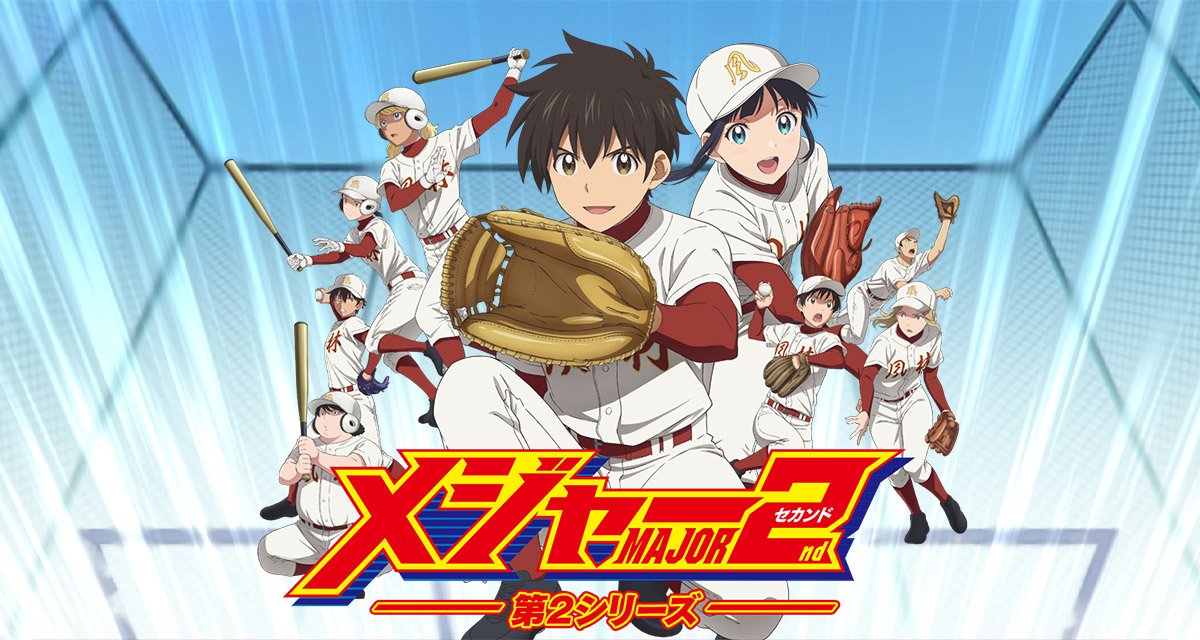
Major stands out as the most comprehensive sports anime to date, boasting six seasons, several movies, and additional OVAs. The series follows the career of Gorou Honda, beginning from his childhood and spanning all the way to the World Cup. Notably, there’s even a sequel anime centered around Gorou’s son.
Throughout this extensive journey, viewers witness Gorou’s growth as a player, individual, and parent, although he maintains a certain youthful demeanor. While occasionally veering into the improbability, the baseball scenes are meticulously crafted and fascinating.
“Major” is a monumental sports anime series that revolves around the journey of Goro Honda, a talented and determined baseball player. Created by Takuya Mitsuda, the manga was serialized in Weekly Shōnen Sunday from 1994 to 2010.
It was later adapted into an anime series by Studio Hibari, which aired from 2004 to 2010, followed by several sequels and spin-offs. “Major” stands out for its nice portrayal of baseball, its compelling character development, and its exploration of themes such as perseverance, friendship, and the pursuit of dreams.
The story follows Goro Honda, initially depicted as a young boy with a passion for baseball inherited from his father, Shigeharu Honda, who was once a professional baseball player. Determined to follow in his father’s footsteps and become a star player in his own right,
Goro faces numerous challenges and setbacks as he navigates the competitive world of baseball. From his early days in Little League to his professional career in the Japanese and Major Leagues, Goro’s journey is marked by triumphs, heartaches, and moments of profound growth.
As Goro matures both as a player and as a person, he forms lasting friendships with teammates and rivals alike. Along the way, he encounters formidable opponents, experiences the highs of victory and the lows of defeat, and learns valuable lessons about teamwork, perseverance, and the importance of chasing one’s dreams.
Goro Honda: Goro is the heart and soul of “Major,” characterized by his unwavering passion for baseball, his indomitable spirit, and his relentless pursuit of excellence. From his early days as a spirited young boy to his rise as a professional athlete,
Goro undergoes significant growth and development. His journey is marked by moments of triumph and adversity, as he grapples with injuries, setbacks, and the pressures of competition. Through it all, Goro’s determination, resilience, and love for the game shine through, inspiring those around him and cementing his place as a baseball legend.
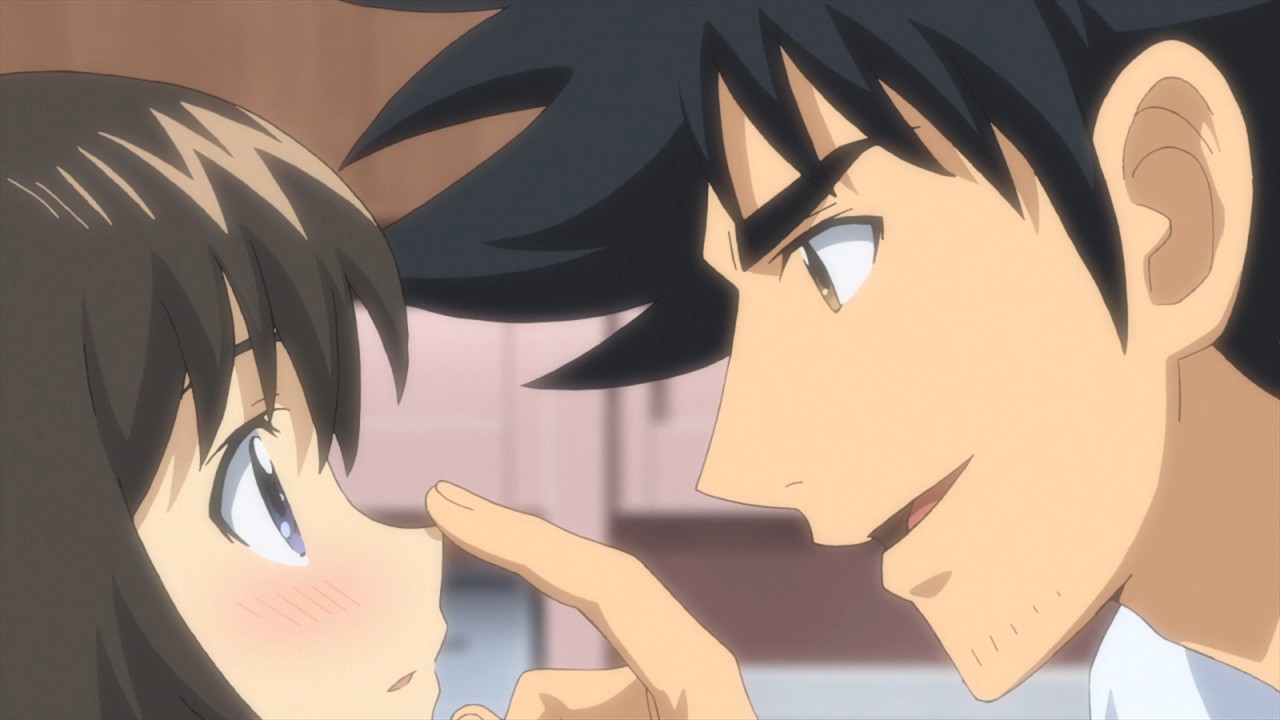
Shigeharu Honda: Shigeharu, Goro’s father, serves as a central figure in the series, providing guidance, support, and inspiration to his son. A former professional baseball player himself, Shigeharu understands the challenges and sacrifices inherent in pursuing a career in sports. His bond with Goro is a driving force in the series, fueling Goro’s passion for baseball and shaping his journey as a player and as a person.
Supporting Characters: “Major” features a rich cast of supporting characters, each contributing to Goro’s growth and the narrative:
Kaoru Shimizu: Goro’s childhood friend and longtime teammate, Kaoru shares Goro’s love for baseball and serves as a source of encouragement and support throughout his journey. Their friendship evolves over the course of the series, deepening as they face challenges together on and off the field.
Toshiya Sato: A talented pitcher and Goro’s rival-turned-teammate, Toshiya pushes Goro to new heights with his competitive spirit and determination. Their friendly rivalry drives much of the series’ drama and excitement, as they strive to outdo each other on the diamond.
Joe Gibson Jr.: An American baseball prodigy who crosses paths with Goro during his time in the Major Leagues, Joe serves as a formidable opponent and a catalyst for Goro’s growth as a player. Their encounters highlight the cultural differences and similarities between Japanese and American baseball, adding depth to the series’ exploration of the sport.
“Major” explores the theme of perseverance through Goro’s relentless pursuit of his dreams despite the obstacles he faces. From overcoming injuries to bouncing back from defeat, Goro’s resilience in the face of adversity serves as a powerful example of the human spirit’s capacity to endure and thrive.
Friendship is a central theme in “Major,” with Goro forming deep bonds with his teammates, rivals, and mentors. The series highlights the importance of camaraderie, teamwork, and mutual support in achieving success both on and off the field. Goro’s relationships with his fellow players enrich the narrative, providing moments of camaraderie, conflict, and growth.
The theme of legacy runs throughout “Major,” as Goro grapples with the weight of his family’s baseball lineage and strives to carve out his own path in the sport. His journey is shaped by the legacy of his father, Shigeharu, whose own career serves as both inspiration and burden for Goro. As Goro seeks to honor his father’s memory while forging his own identity as a player, he grapples with questions of tradition, ambition, and the pursuit of greatness.
The animation in “Major” is fluid and expressive, capturing the intensity and excitement of baseball games with dynamic camera angles, detailed character designs, and vibrant colors. The series’ art style evolves over time to reflect the passage of years and Goro’s growth as a player, with subtle changes in character design and animation enhancing the sense of progression and development.
The baseball action in “Major” is rendered with meticulous attention to detail, from the precise movements of pitching and batting to the dramatic tension of game-winning plays. The use of slow-motion, close-ups, and dramatic angles heightens the excitement of key moments, drawing viewers into the heart-pounding action on the field.
The soundtrack of “Major” features a mix of upbeat and emotional tracks that complement the series’ themes and tone. From energetic opening themes to poignant background music, the soundtrack enhances the drama and emotion of key scenes, immersing viewers in baseball and Goro’s journey.
The voice acting in “Major” is top-notch, with a talented cast bringing the characters to life with depth and authenticity. Daiki Nakamura’s portrayal of Goro captures his passion, determination, and vulnerability, while supporting cast members to deliver nuanced performances that enrich the series’ ensemble cast.
“Major” has had a significant impact on both anime and baseball fans alike, garnering critical acclaim and a dedicated fanbase worldwide. The series is praised for its realistic portrayal of baseball, compelling characters, and emotional depth, earning accolades from critics and viewers alike.
The legacy of “Major” extends beyond its anime adaptation, with the manga inspiring spin-offs, video games, and even a live-action film adaptation. Its enduring popularity.

